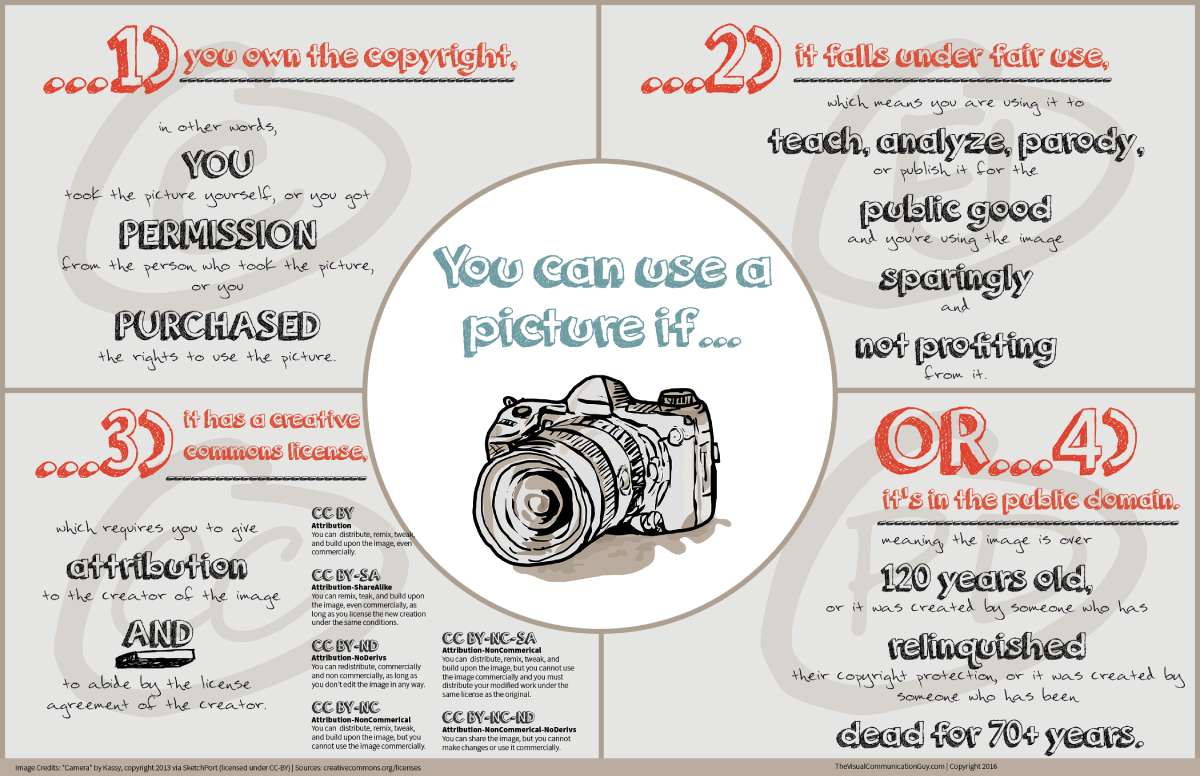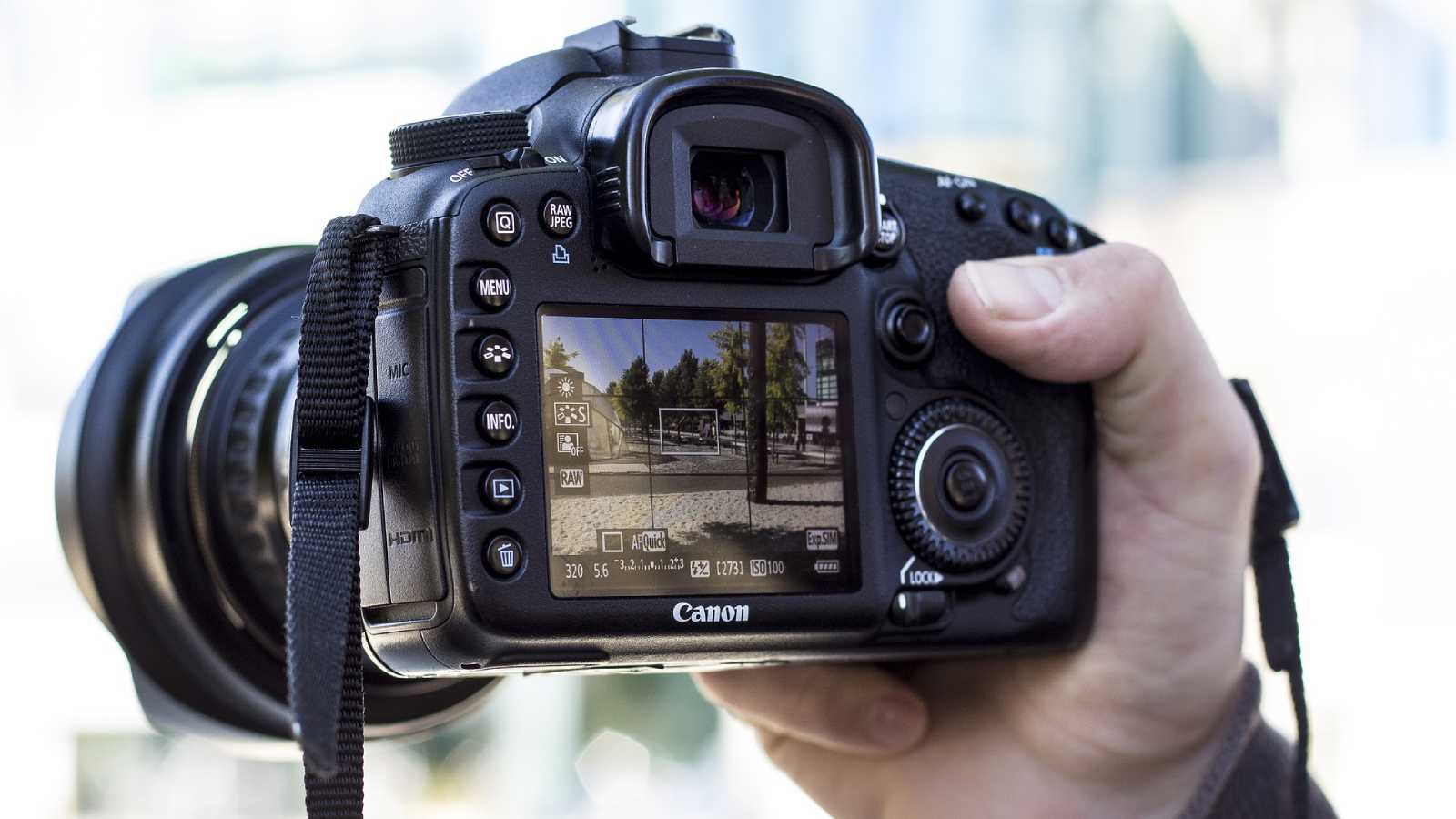In the age of Google image search, there’s no shortage of quality photos and images at your disposal. But just because an image is on the internet, it doesn’t mean you have permission to use it in your design project.
Next time you’re about to copy & paste a photo for your brochure, website or business presentation, stop and think – you could be breaking copyright law. The diagram below was created by Dr. Curtis Newbold a.k.a. The Visual Communication Guy. It takes complex copyright laws and boils them down to their very basics. Put simply, there are 4 reasons you can re-use an image…

1. It belongs to you
Did you take the photo yourself? Is it an original piece of artwork you made with your own two hands? Or is it a stock photo that your bought the rights to? If so, congratulations! – you own the copyright and you can legally use the image.
2. It falls under fair use
In some rare instances, you can use another’s copyrighted work without seeking their permission first. This is generally for non-commercial, educational use or for the purposes of parody & criticism. You can read more about fair use on the the government website.
3. It has a Creative Commons license
Sometimes artists & photographers choose to publish their work under a Creative Commons license – which gives other people permission to re-distribute and re-use their work. There are different versions of the licence with slightly different conditions. For example, it may stipulate that you have to give appropriate credit to the original creator, or that you can only use the image for non-commercial purposes. You can search for Creative Commons images on places like Wikimedia Commons and Flickr.
4. It’s in the public domain
Public domain means that nobody owns the copyright – either because the creative work is very old, the creator has been deceased for a long time, or that the original author has relinquished the copyright. Ever wondered why Hollywood keeps making Robin Hood films? It’s because Robin Hood is an old story that nobody owns the rights to (which means the film company doesn’t have to pay royalties to anybody). The rules and time frames are a little complicated, so it’s best to do you research first.
To summarize…
When an artist creates a piece of creative work – such as a photo, video, song, film script, a story or a musical composition – they automatically own the copyright. Copyright protects creative work and stops others from using it without permission. Just because it’s easy to copy & paste an image from the internet it doesn’t make it legal! Be sure to follow the 4 tips above to stay on the right side of the law!
About the images in this article
The photo at the top of this page has been released into the public domain, which means we can use it without permission or attribution. The “You Can Use a Picture If…” diagram has been released under a Creative Commons licence. We’re allowed to use it as long as we acknowledge the original creator – The Visual Communication Guy
More information about copyright laws:
UK Copyright Service
How copyright protects your work Creative Commons


